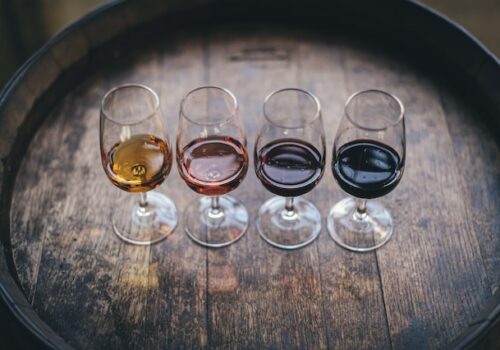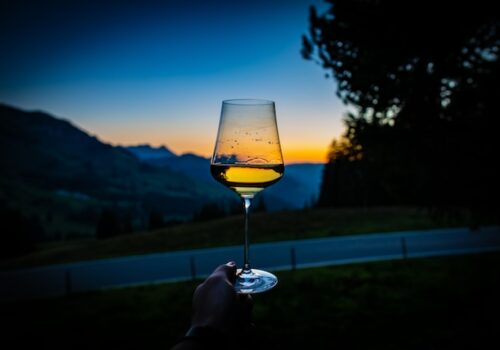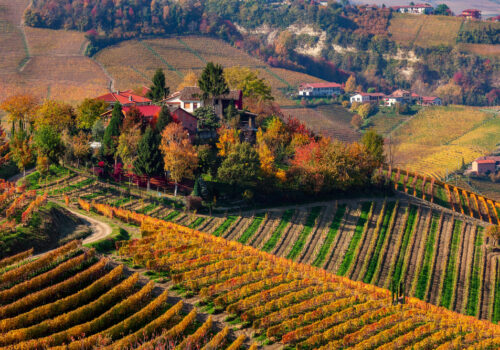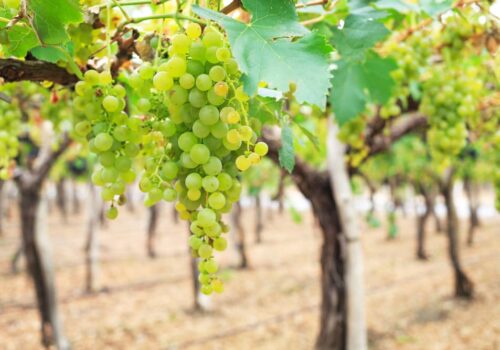What are the best varieties for red wine
Pinot noir.
A black yielding grape that ripens in 141-151 days. There is no reliable information about its origin, but Traminer and Pinot ménier are considered likely parents. The bush is medium-grown with an unusual coloration of the lower leaves (green with a red tint). Flowers are ovipotent, there are no problems with pollination. The bunch is small in size, weighing 66-120 grams, the shape is often cylindrical. The berry has a pleasant taste, colorless juice and balanced sugar content. Its shape is rounded and its color is dark blue.
The yield of Pinot noir is 50-60 cwt/ha. The plant is vulnerable to phylloxera, it is tolerant to grey rot, oidium.
Saperavi
A very old Georgian grape variety with dark blue berries. Saperavi vegetation period is 150-160 days, and harvesting begins in late September-early October. The bunches are beautifully shaped with wide-conical bunches of small grapes, the weight of one grape is 90-100 gr. The grapes are very juicy and taste harmonious, weighing barely over 1g. Each berry contains 2-3 seeds.
The plant has a poor resistance to mildew and oidium, with high humidity is affected by gray rot. Compared with other varieties, it is less often damaged by leafhopper.
Yield Saperavi 90-110 cwt/ha. This crop is frost-resistant, it survives the winter without shelter under temperature conditions not exceeding -20°.
Cabernet Sauvignon
The cabernet sauvignon berries are very juicy and have a well-balanced taste with a hint of currant. It is a French varietal, but today it is cultivated in many countries of the world. The ripeness is 143-165 days. The grapes are cylindrical in shape and weigh 70-80g. Each berry contains 1-3 seeds. The skin is dark blue medium density, which provides a good safety and portability of fruits.
The yield is 55-60 hundredweight per hectare. There is an increased resistance of culture to mildew and gray rot. Compared with other varieties, it withstands better phylloxera and leafhopper attacks.
Cabernet Franc
Technical ripeness comes after 145-160 days. The unusual taste of berries is filled with different notes, in which raspberries and blackberries are felt. The bunches are cylindrical in shape and dark blue in color, weighing no more than 70-90 grams. The yield is low (35-40 cwt/ha), but this is compensated by the plant’s good resistance to mildew and phylloxera.
Merlot
Merlot variety was bred in France, the alleged parents are considered to be Cabernet Franc crossed with Magdalene and Noir de Charente. Grapes of medium size and density, have a dark blue color with a characteristic waxy patina, weight is 110-150gr. The taste is balanced with a hint of nightshade.
The grapes mature in 152-164 days. The plant shows average resistance to oidium, phylloxera, mildew. Frost-resistance is up to minus 15-17°C.
Sangiovese .
Italian thermophilic variety of technical grape with vegetation period of 145-160 days. Its bushes are medium-height, the flowers are monopolar, the bunches are cylindrical, weighing up to 100 gr. There are many clones with slightly different berry size (0.7-1.3 g). Its taste, rich in various tones, makes any wine drink exquisite.
Syrah
The variety is resistant to cold and high temperatures, but poorly tolerates strong winds and drought. Its flavor qualities meet the requirements of technical grapes, but it cannot boast a high yield (30 centners/hectare). Juice of the fruits of mature plants is saturated with a beautiful dark purple hue and dense. The ripening time of the fruit is 145-158 days. The weight of wide-conical bunches ranges from 80-120 grams.
Carmenere
The grapes are old French varieties with a growing season of 152-165 days. Today it is widely cultivated mainly in Chile, and is considered the pride of the country. The bushes are stout, the bunches may be cylindrical, wide-conical or shapeless, weighing 75-100 gr.
Its berries are medium-sized and weigh barely 1g, but the flesh is very tasty, sweet but not sugary. Its beautiful dark purple color enables to produce pink to dark-colored wines.
Mourvèdre
A late maturing plant from Spain. The bushes are well developed, with a strong vine and root system. Leaves are medium-sized, with a characteristic three-lobed shape. The dark blue berries are often rounded but may become slightly oval, medium berry size. Yield with low irrigation is up to 60 c/ha, but with regular irrigation can significantly increase. The bunches are formed in the form of a cone or cylinder, the berries are tightly pressed to each other.
Grenache
A versatile variety, but most often the fruit is used to make grapes and juice. The variety is one of the most common on the planet due to the adaptability of the vine. The grape is very heat-loving and easily tolerates drought and heat. Soil requirements are also not high when planting seedlings. Yield in dry conditions is high – up to 20 cwt/ha. Features of berries: low acidity, juiciness, ruby color, rich aroma.




